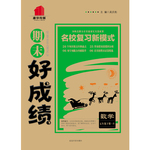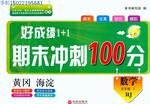题目内容
B [2015 •齐鲁19所名校高三调研】
Can you believe your eyes? A recent experiment sug?gests that the answer to that question may depend on your age.
Martin Doherty , a psychologist at the University of Stirling in Scotland,led the team of scientists. In this experi?ment, Doherty and his team tested the perception(观察力〉of some people, using pictures of some orange circles. The re?searchers showed the same pictures to two groups of people. The first group included 151 children aged 4 to 10, and the second group included 24 adults aged 18 to 25.
The first group of pictures showed two orange circles alone on a white background. One of the circles was larger than the other, and these people were asked to identify the larger one. Four-year-olds identified the correct circle 79 per cent of the time. Adults identified the correct circle 95 per cent of the time.
Next,both groups were shown pictures where the orange circles,again of different sizes, were surrounded by grey cir?cles. Here's where the trick lies. In some of the pictures, the smaller orange circle was surrounded by even smaller grey circles—making the orange circle appear larger than the other orange circle, which was the real larger one. And the larger orange circle was surrounded by even bigger grey circles―so it appeared to be smaller than the real smaller orange circle.
When young children aged 4 to 6 looked at these tricky pictures ?they weren't fooled―they were still able to find the bigger circle with roughly the same accuracy as before. Older children and adults, on the other hand, did not do as well. Older children often identified the smaller circle as the larger one,and adults got it wrong most of the time.
As children get older,Doherty said,their brains may de?velop the ability to identify visual context. In other words, they will begin to process the whole picture at once : the tricky
grey circles,as well as the orange circle in the middle. As a result,they're more likely to fall for this kind of visual trick.
5.Doherty and his team of scientists did an experiment to evaluate .
A. children's and adults' eyesight
B. people's ability to see accurately
C. children's and adults' brains
D. the influence of people's age
6.When asked to find the larger circle, .
A. children at 6 got it wrong 79 % of the time with no grey ones around
B. only adults over 1.8 got it right 95% of the time with grey ones around
C. children at 4 got it right about 79% of the time with grey ones around
D. adults got it right most of the time with grey ones around
7.According to the passage, we can know that .
A. a smaller orange circle appears bigger on a white back?ground
B. an orange circle appears bigger than a grey one of the same size
C. a circle surrounded by other circles looks bigger than its real size
D. a circle surrounded by bigger ones looks smaller than its real size
8.Why aren't younger children fooled?
A. Because they are smarter than older children and adults.
B. Because older people are influenced by their experi?ence.
C. Because people's eyes become weaker as they grow older.
D. Because their brains can hardly notice related things together.
B [文章大意]本文是一篇说明文,讲述了观察力与年龄有关,年龄不同,观察力也不同。
5.B 细节理解题。根据第二段第二句"In this experiment,Doherty and his team tested the perception(观察力)of some people.",,可知B项正确。
6.C 细节理解题。根据第三段倒数第二句"Four-year-olds identi?fied the correct circle 79 per cent of the time."及第五段第一句可知C项正确。
7.D细节理解题。根据第四段的内容尤其是最后一句"And the larger orange circle was surrounded by even bigger grey circles— so it appeared to be smaller than the real smaller orange circle.,, 可知D项正确。
8.D推理判断题。根据第四、五、六段的内容可知D项正确。

 期末好成绩系列答案
期末好成绩系列答案 99加1领先期末特训卷系列答案
99加1领先期末特训卷系列答案 百强名校期末冲刺100分系列答案
百强名校期末冲刺100分系列答案 好成绩1加1期末冲刺100分系列答案
好成绩1加1期末冲刺100分系列答案